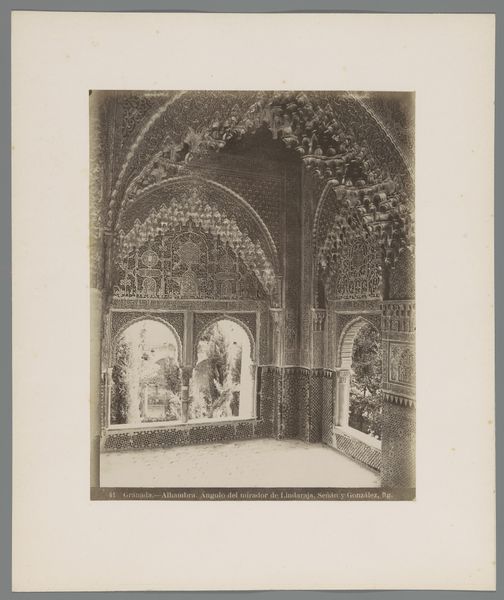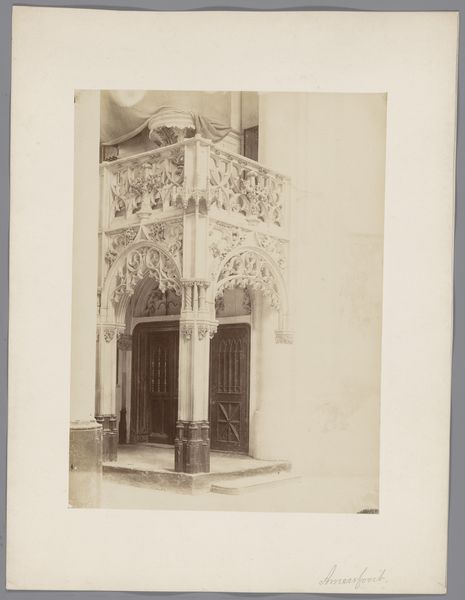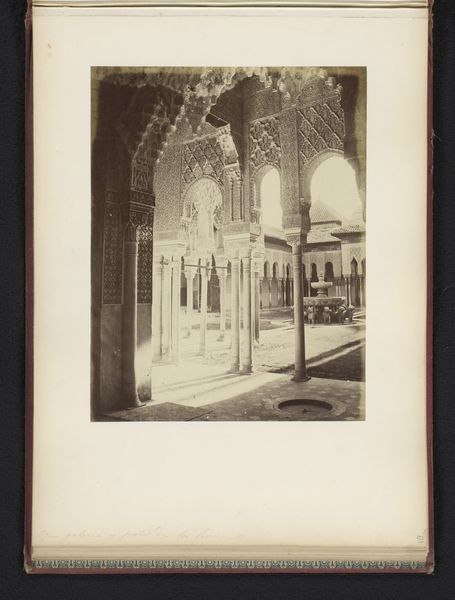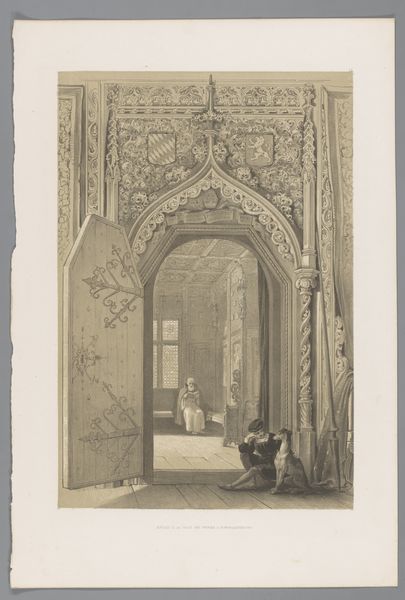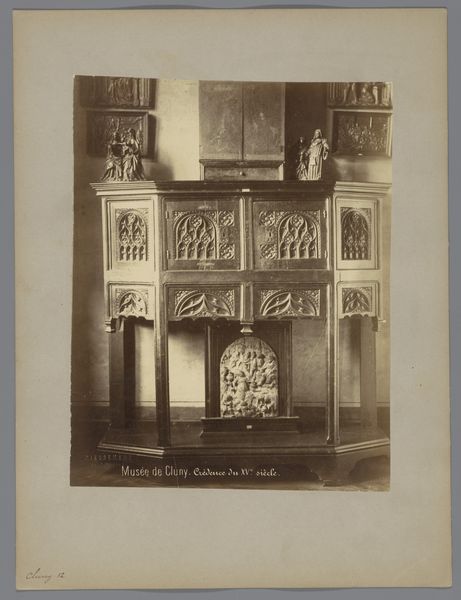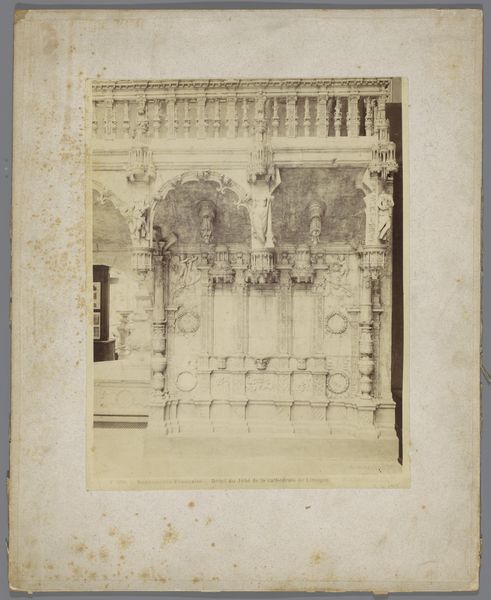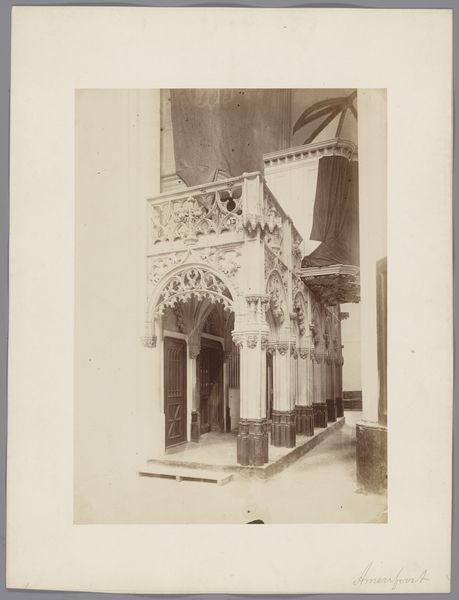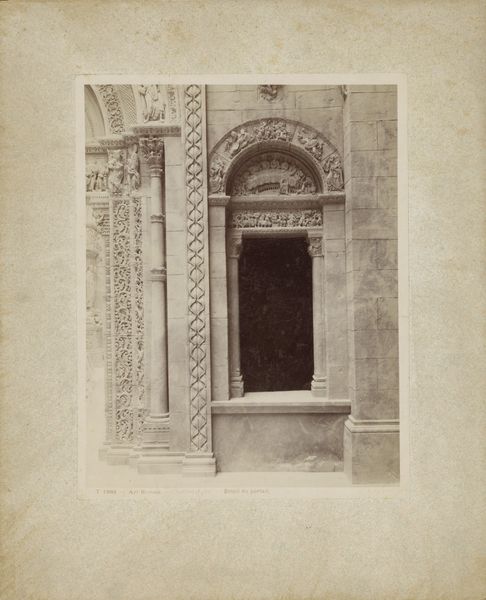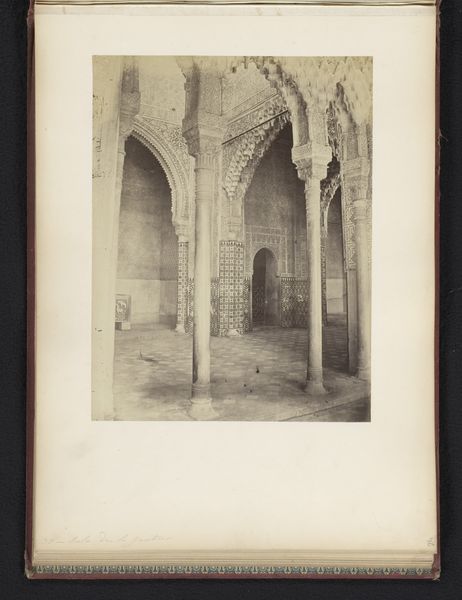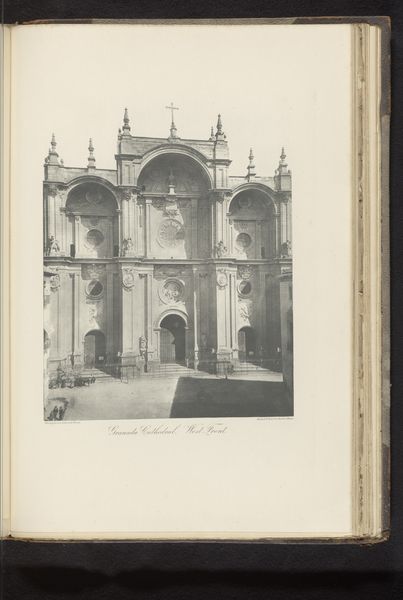
print, photography
# print
#
landscape
#
photography
#
coloured pencil
#
islamic-art
Dimensions: height 330 mm, width 242 mm, height 218 mm, width 173 mm
Copyright: Rijks Museum: Open Domain
Editor: This is Tomas Molina’s photograph of the Córdoba, Capilla de Villaviciosa, taken around 1890. The architectural details are amazing, and the arches create such a strong sense of depth. How do you interpret this work, especially considering its historical context? Curator: This photograph offers us a glimpse into the complex history of Spain, particularly the layered identities present in Córdoba. The Villaviciosa Chapel, originally part of the Great Mosque, embodies the fascinating intersection of Islamic and Christian architectural traditions. This space testifies to shifting power dynamics. Who had access, and on what terms? Editor: I hadn’t thought about access so directly. So, you're saying that the photograph doesn't just show an architectural space, but also hints at issues of power and religious conversion? Curator: Precisely. Consider the colonial gaze inherent in the photographic act itself. How does Molina, a European photographer, frame this space? Is he exoticizing it, documenting its 'authenticity', or perhaps participating in a broader Orientalist discourse? Moreover, what narrative is being constructed by the depiction of figures within a sacred space? Editor: I see what you mean. I am looking closer now and trying to find the artist. Where do you see a political meaning in it? Curator: Well, what does it mean when spaces once devoted to one form of worship are repurposed for another? Also, whose history is valorized, and whose is erased? The architectural details reveal more about the layers of identity. Can you see them? Editor: I do now, it really is a fascinating piece when viewed through the lens of cultural exchange and power. I have to look at photos more carefully from now on. Curator: Absolutely. Understanding an artwork like this requires delving into its multifaceted social and historical contexts and continuously questioning whose perspectives are privileged and whose are marginalized.
Comments
No comments
Be the first to comment and join the conversation on the ultimate creative platform.
